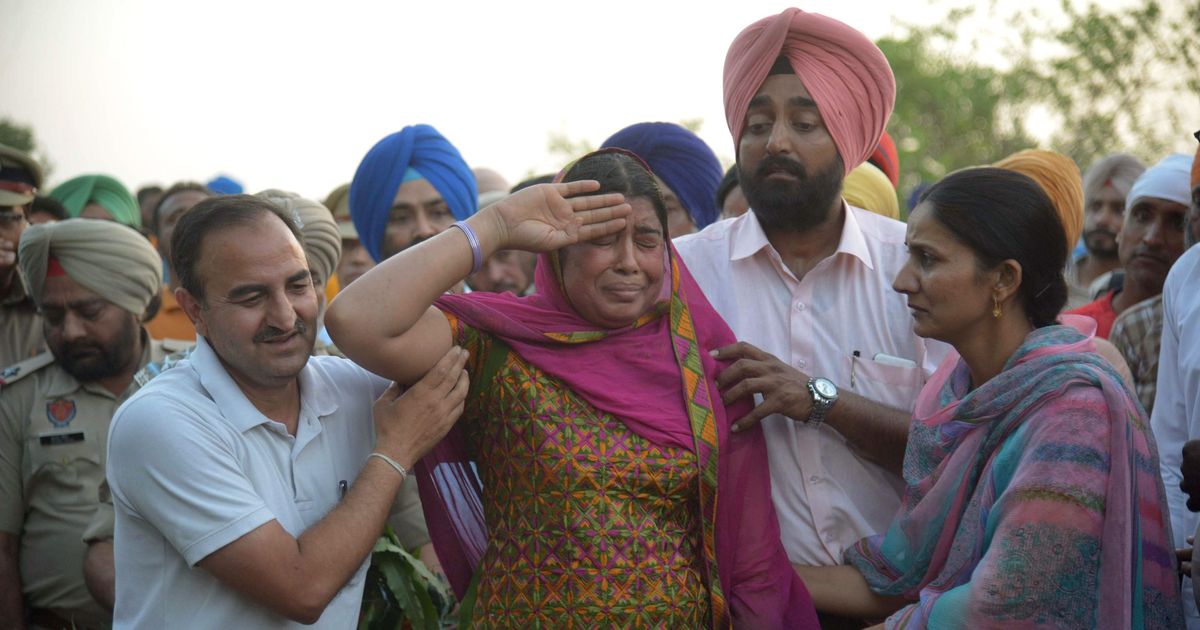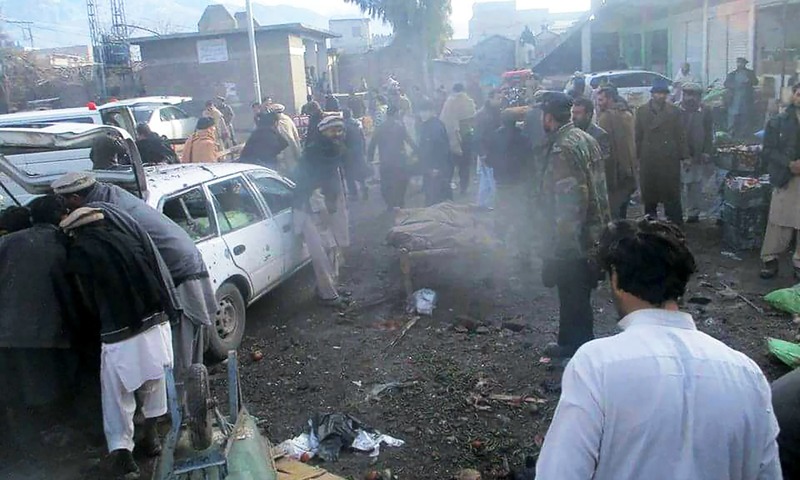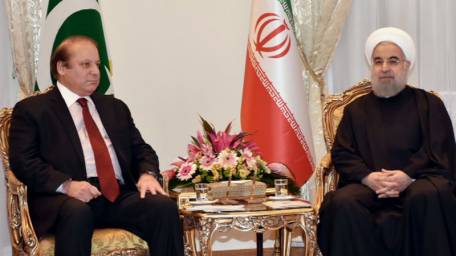
Those who would like to reshape the Afghan policy and willing to walk the Afghan talk within Pakistan do not wield real power, and those who have, do not have the will.
Conflict Reader # 51, 12 May 2018
CR Brief
D. Suba Chandran
Professor
International Strategic and Security Studies Programme (ISSSP)
National Institute of Advanced Studies (NIAS), Bangalore
During the recent months, there have been numerous meetings the highest levels involving the military and political leaders between Pakistan and Afghanistan. The recent meeting between Pakistan’s Prime Minister Abbasi and the Afghan President Ghani in Kabul has raised a few expectations within Pakistan about an Af-Pak peace process. Earlier in April 2018, there was another round of talks between Pakistan’s Foreign Secretary Tehmina Janjua and her Afghan counterpart in Kabul.
Gen Bajwa, Pakistan’s Army Chief visited Kabul in early 2018 and late 2017. Gen Bajwa in his February 2018 visit to Kabul was quoted to have stated: “the path to regional peace and stability passes through Afghanistan...Regions develop as a whole, not individual countries.”
Do the recent developments hint at an Af-Pak rapprochement? Or the issues so polarised, that it would remain a chimaera?
I
Af-Pak Peace: The Immediate Backdrop
Increased Level of Afghan Violence
During the recent months, the level of violence in Afghanistan – against the State and the minority communities – especially the Shias have increased. The Taliban and the ISIS in Afghanistan have intensified their suicide attacks against both the State and civil society targets. Despite the Trump support and the American military surge, Afghanistan during the last few months has witnessed more violence.
Perhaps, the increased level of violence inside Afghanistan factored in Ashraf Ghani making a public invitation to the Taliban to initiate a new peace initiative. There was also an input from the Taliban indicating a process. Earlier, in February 2018, there was a statement from the Taliban, addressing (strangely) the American Congress and the people and expressing their desire for a settlement.
Global Pressure on Pakistan
For Islamabad, there has been an international pressure, led by the US. The Trump administration seems to be serious about their threats on forcing Pakistan to act across the Durand Line. Besides the Trump Tweet in January, his administration blocked the American aid to Pakistan and increased the pressure at the global level through the FATF.
The meeting of the Financial Action Task Force (FATF) that looks into individual initiatives against terror financing ended up in a disaster for Pakistan. Though Islamabad expected that its all-weather friend China and Saudi Arabia would bailout from being placed on the grey list, the American pressure and carrots (to China) led to Pakistan being placed in a precarious situation. Pakistan believed, or perhaps made to think (by China, Saudia Arabia and even Russia), that the American pressure could be waded off, leading to the foreign minister also tweeting a thank you note! The outcome of the FATF meeting on a “grey list” should have made Pakistan to see the impact of American pressure in black and white.
The Chabahar Scare
Outside the American pressure, New Delhi also has created a scare for Pakistan, with the opening of Chabahar port, and promised an increased India-Iran engagement and going fast on the International North-South Trade Corridor (INSTC) through Iran and Afghanistan. If Chabahar gets operationalised in full swing, it will reduce Kabul’s dependence on Islamabad to reach the port in the Arabian Sea.
A report in Pakistani media relating to Af-Pak trade should have further enhanced the scare; according to the report, quoting the Chairman of Pakistan-Afghanistan Joint Chamber of Commerce and Industry “India has succeeded to penetrate in Kabul slashing the market share of Pakistan by more than 50 percent in the last two years.” According to Motiwala, the President of the Pak-Afghan Joint Chamber, Pakistan’s Afghan trade declined to $1.2 billion from $2.7bn during the last two years.
Clearly, the recent meeting between Ghani and Abbasi did not take place in a vacuum. There was a strategic backdrop for both sides.
Now, will Ghani and Abbasi walk the talk? Or, will it be one more opportunity squandered?
II
What are Pakistan’s Calculations?
There are a few expectations from Pakistani side – immediate and strategic.
Violence across the Durand Line
Cross-border violence remains one of the immediate concerns for Pakistan. There has been a strategic reversal regarding militant threats along the Durand Line in the recent years. Until recently, the direction of violence was from one side, with the base and camps on the other side. Kabul has been complaining for a long time, along with the international troops about militant camps in Pakistan, especially along the Tribal Agencies and cross-border attacks inside Afghanistan. Both – the Afghans and Americans have been complaining about the presence of Taliban inside Pakistan and using the latter’s territory to target Afghanistan.
During the recent years, the above has become a two-way interaction. Islamabad has been complaining about the TTP having its bases in Afghanistan, and conducting cross-Durand attacks inside Pakistan. Outside the TTP attacks on Pakistan from Afghanistan, Islamabad is also wary of the US-led drone attacks in the tribal regions. While the US (and Afghanistan) have succeeded substantially in preventing any Pakistani official movement across the Durand Line, Pakistan could not succeed in doing the same vis-à-vis the drone attacks.
Resumption of Drone Attacks
During the recent months, there has been a resumption of drone attacks in the FATA region of Pakistan. The military in Pakistan may have the operational potential to bring down the American drone, but lack the will to shoot them down. As a result, Pakistan, especially its Establishment is seen as incapable of protecting its own territory, except increasing media rhetoric against the drones.
During the last part of Obama’s term, the drone attacks in the FATA from across the Durand Line had considerably declined. During 2015-17, the drone attacks had come to a single digit during the year. However, since January 2018, there have been a series of drone attacks, hinting at a resumption.
Increasing Indian Footprints across Afghanistan and Iran
India is one of the major worries for Pakistan in Afghanistan. While the relations between India and Afghanistan have always been historical and cultural, recent initiatives by New Delhi have shifted the base to a strategic level, forcing Pakistan to make a note of the changing political and economic environment and options available for Kabul. In particular is the opening of Chahbahar for India and Afghanistan through Iran. This would undercut Afghanistan’s reliance on Pakistan’s ports and thereby Islamabad’s influence on Kabul over Afghan outlet.
Once the Chahbahar project expands and links the Iranian coast with the Afghan mainland with road and rail routes, Afghanistan would prefer to reach out to rest of the world through the Iranian ports, than Karachi and Gwadar. This would also affect Pakistan’s CPEC calculations; though the China-Pakistan Economic Corridor is being seen as an Eldorado by many within Pakistan, there is an expectation that Afghanistan would also become a part of the Corridor. Chahbahar will wean Afghanistan away from CPEC, and thereby also from Pakistan.
Added to the above scare is the fear over Afghan-American-Indian strategic collusion, which would go against Pakistan’s geostrategic calculations in the Af-Pak. With the 2014 withdrawal now being history, and with Trump willing to invest further in the Af-Pak – both politically and militarily, Pakistan feels the pressure on its western borders. Growing Indo-US and Indo-Afghan relations, leading to India-US-Afghanistan coming together in the region are perceived as a nightmare situation for Islamabad.
III
Will Pakistan walk the Afghan talk?
Undoubtedly, Pakistan has a set of demands against Afghanistan. Kabul will have to address them. At the same time, there are demands against Islamabad as well, not only by the Afghan government, but also by the American troops stationed there and fighting the insurgency along with the Afghan security forces.
Pakistan is well aware of what is expected from Kabul. How far is Islamabad willing to walk to address them?
Unfortunately, there is a divide within Pakistan on what the country would like to achieve across the Durand Line. There are three principal actors, with one of them wielding real power – the civil society, polity and the Deep State.
During the recent years, there has been a substantial debate within Pakistan in terms of the Afghan Endgame. Most of the civil society (outside the Taliban and its sympathisers) have repeatedly been emphasising about a new approach towards Afghanistan. Never before, there has been a sharp critique of Islamabad’s Afghan policy within Pakistan. Many in Pakistan, while agreeing to the significance of Afghanistan, but have been publicly criticising Islamabad’s strategies towards achieving the same. There has been a substantial demand for positive interaction with Afghanistan at the societal level.
The polity, the present one led by the PML-N would also prefer in a change in strategy towards Afghanistan, and even would like to make Pakistan a land bridge between the east and west. A section within this has also been vociferous about trans-national pipelines and power grids – linking South Asia with Central Asia through Pakistan and Afghanistan. TAPI and CASA-1000 have been one of the few projects within the above approach. They would even want to enhance the potential of trade and convert Pakistan into a big transit country.
With the CPEC, there is north-south connectivity making Pakistan a land bridge between China and the Arabian Sea. Roads, pipelines and electricity corridors across Pakistan will link South Asia with Central Asia. The now dethroned leader Nawaz Sharif would have wanted to pursue that path but was not allowed do. That should have been the motivation for Sharif’s initial interaction with the Indian Prime Minister Modi. It was a different story, which need not be told here, but needs to be kept in mind.
However, the real power lies with the third actor – the Deep State in Pakistan. Led by the military and intelligence agencies, Pakistan’s Afghan objectives and strategies have little space and concerns for the first two actors – civil society and polity. While Parliament may be supreme and the Prime Minister along with foreign ministry may have the legal sanctions to carry forward Pakistan’s Afghan policy, in reality, it has become the sole domain of the Deep State.
So, the real question is – whether Pakistan will walk the talk vis-à-vis Afghanistan and Af-Pak peace? Unfortunately, those who would like to reshape the Afghan policy and willing to walk the Afghan talk within Pakistan do not wield real power, and those who have, do not have the will.
IV
PostScript
Few Questions
Will Trump pulling out of Iran’s nuclear deal, lead to a different calculation in the Deep State, forcing them to walk slow with their Afghan talk?
Will the Deep State see Trump walking out of the Iran nuclear deal as a new opportunity to engage the US? Will Iran, try to target the US by de-stabilizing Afghanistan?
On the India front, what if the Deep State forecasts a go slow in Chahbahar, with Trump’s disastrous pullout?
Afghanistan, Pakistan and India will have to consider and forecast the regional fallouts of the US walking out of the nuclear deal.
D. Suba Chandran is a Professor and Dean at the School of Conflict and Security Studies at the National Institute of Advanced Studies (NIAS), Indian Institute of Science Campus, Bangalore. He manages an independent portal on Pakistan – www.pakistanreader.org. An abridged version of the above analysis was first published in the Rising Kashmir.























